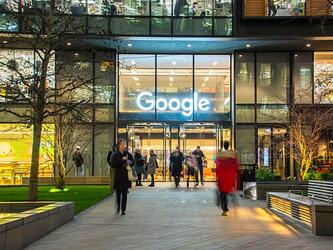Filling the cookie void: Data clean rooms

For years, insights from internet browser cookies have formed the basis of advertising and audience segmentation, but their days are numbered. While Google has delayed its phasing out of cookies until late 2023, the direction of travel is clear. We know that marketers must now start to build their campaigns from different sources and teams are busy getting to grips with how.
The challenge is locating data that is privacy compliant, that can add value to first-party insight, and can also be integrated into systems that make all this information digestible and accessible. Market researchers have a crucial role to play, and third-party data will be key to success in the new era.
However, teams are going to have to be smarter about how they use it to enrich existing data sets while staying on the right side of privacy concerns. What’s needed? Data clean rooms are the missing piece of the puzzle – allowing marketers and advertisers to develop aggregated target audience insight that has both depth and breadth without breaching General Data Protection Regulation (GDPR) rules.
Replacing the cookie jar
Many brands hold a wealth of information on their customers, whether from loyalty schemes, feedback surveys or previous marketing campaigns. But this data can only get them so far in understanding bigger consumer trends and highlighting areas for growth. Third-party cookies were traditionally the go-to for finding new customers and tracking their preferences. Going forward, user-consented data can go a long way to plug the gap, in particular nationally representative, survey-based research.
Survey research of course isn’t new, but the challenge brands now face is how to integrate it securely with their own raw datasets. The answer lies in data clean rooms.
Data clean rooms are a technology that facilitate the matching of datasets without sharing personally identifiable information. Their privacy by design mechanism ensures personal data is not transferred from one party to another. The software allows companies to continue embracing people-based marketing, combining tried and tested customer insight with more comprehensive and wide-reaching survey analysis.
The potential of data clean rooms
What might this look like in practice? Consider a high street retailer that has vast amounts of data through a long-running loyalty scheme. This tells them that as their customers age, they tend to buy more health-focused brands, but they might not know what specifically is driving this change in behaviour nor how it varies by demographic. Overlaying this customer insight with survey data will allow them to grasp the wider trend and identify gaps in existing marketing executions.
Some advertisers are already ahead of the curve in embracing innovative, post-cookie tools, especially younger brands – for example, we are working with a leading digital challenger bank to enrich their customer understanding using TGI media consumption data within a clean room environment.
The transition will likely be trickier for more established businesses that came of age with cookies and have more traditional ways of working. Despite the potential barriers, however, it’s vital that advertisers start to make changes now. It’s important to explore new privacy compliant data collaboration methods and for advertisers to learn how to get the most out of them.
A new dawn
We’re only at the tip of the iceberg when it comes to the use and benefits of data clean rooms. Just as we saw with the explosion of third-party data brought about by the internet, the industry is undergoing another sea change.
Businesses can’t afford to drag their feet in this period of flux and companies who carry on relying on first-party data alone are likely to fall behind competitors – and fall behind quickly. Brands and marketers must adapt to the new ways of working, and as experts in the collection and use of insight, the market research industry is ideally poised to help them make the most of this new data dawn. Data clean rooms and user consented data are central to the transition.
Kapil Sampanthan is director at Kantar

We hope you enjoyed this article.
Research Live is published by MRS.
The Market Research Society (MRS) exists to promote and protect the research sector, showcasing how research delivers impact for businesses and government.
Members of MRS enjoy many benefits including tailoured policy guidance, discounts on training and conferences, and access to member-only content.
For example, there's an archive of winning case studies from over a decade of MRS Awards.
Find out more about the benefits of joining MRS here.













0 Comments